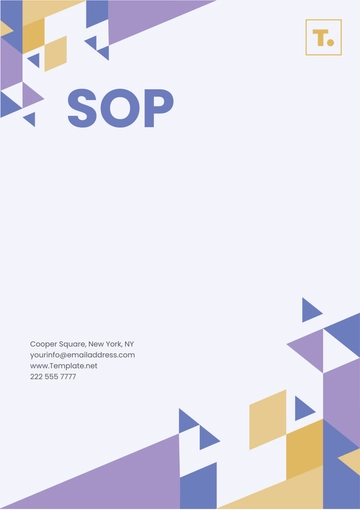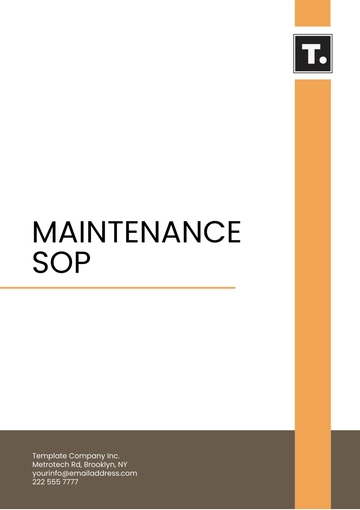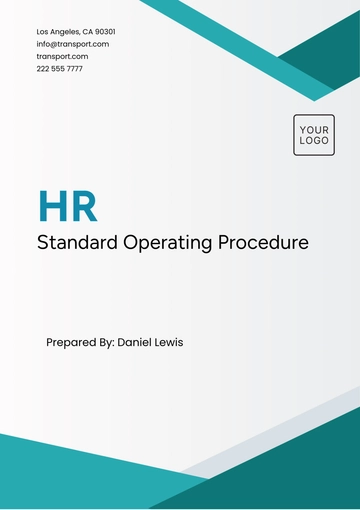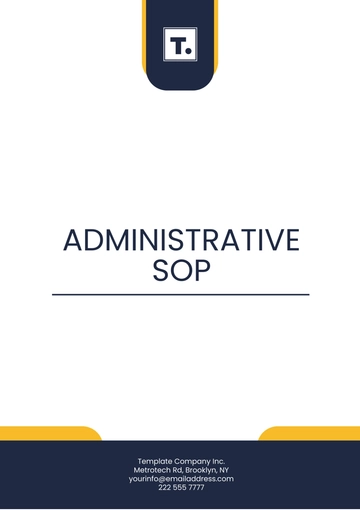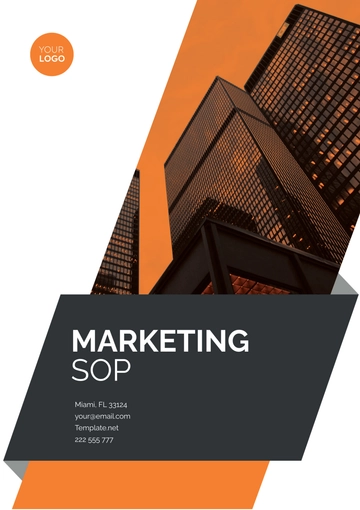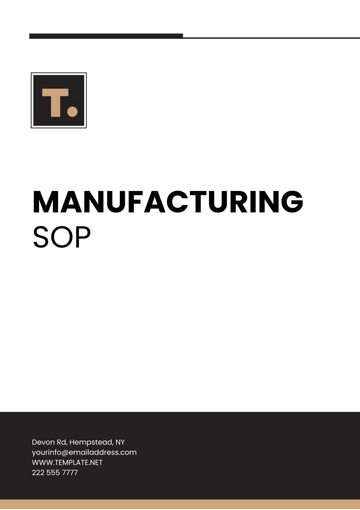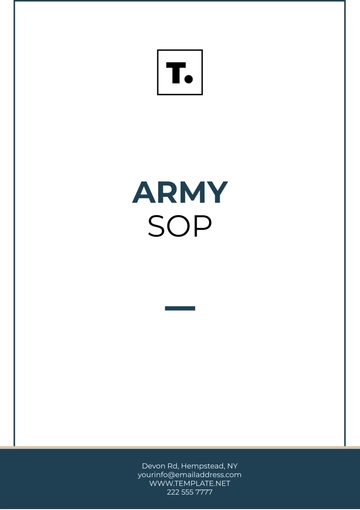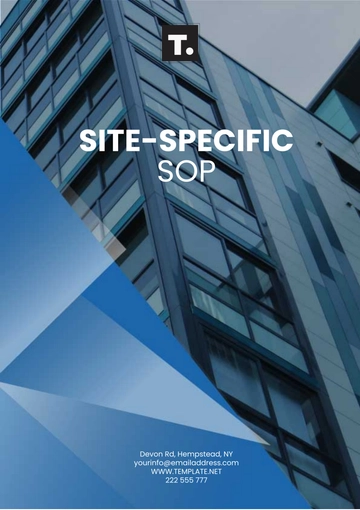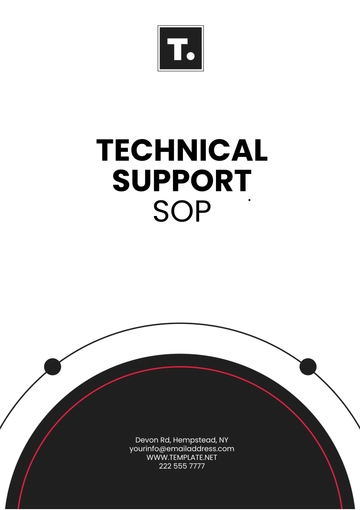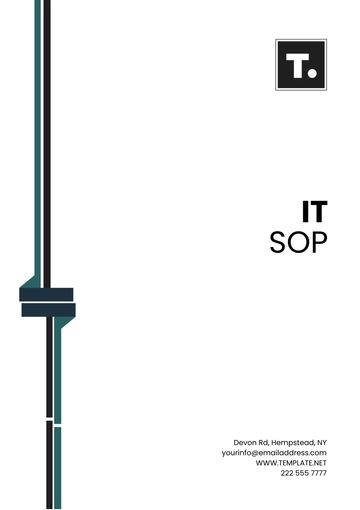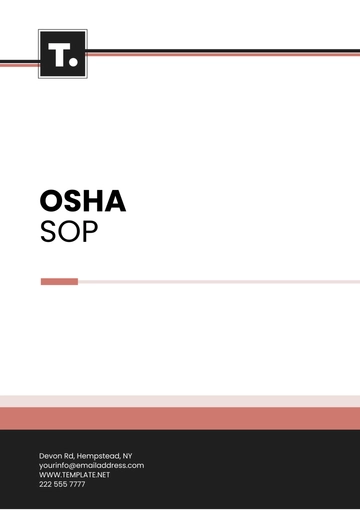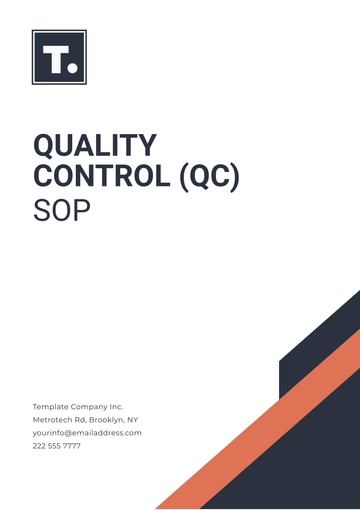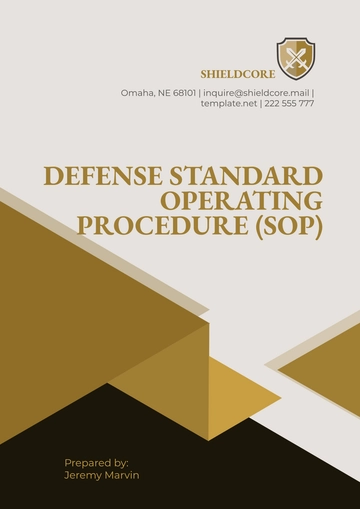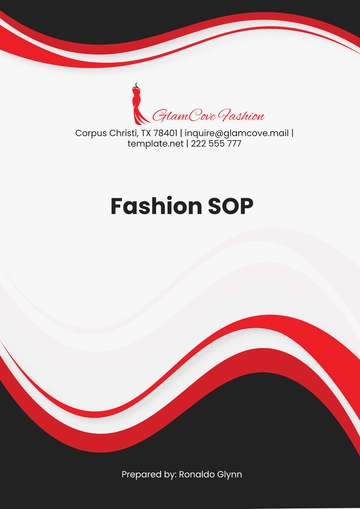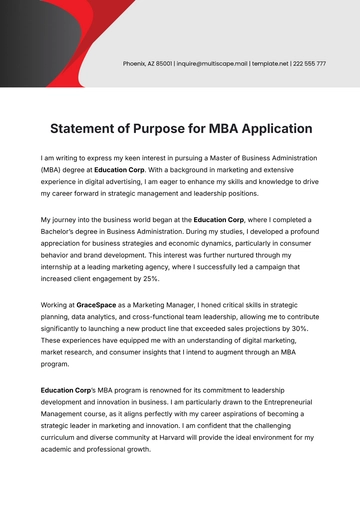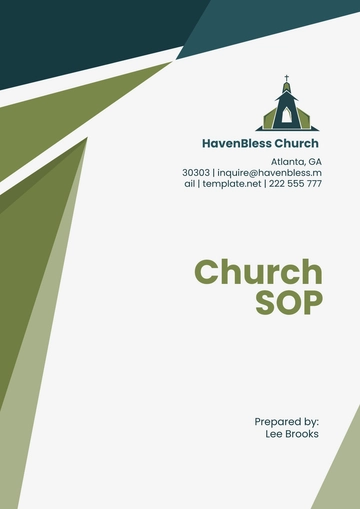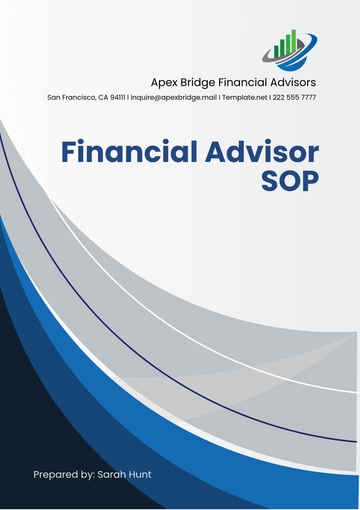Free Advertising Campaign SOP
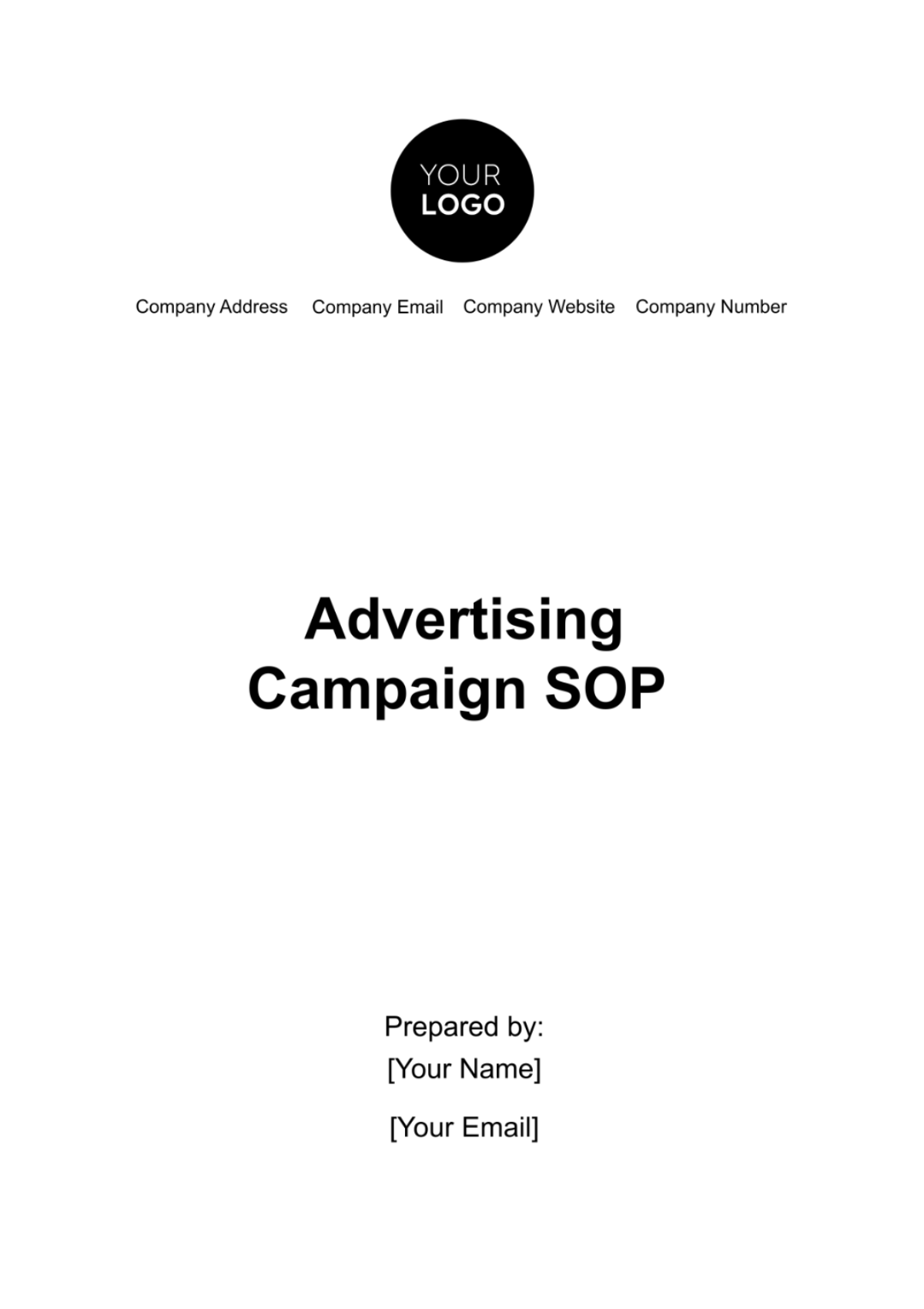
This Standard Operating Procedure (SOP) provides a methodical step-by-step guide for implementing an advertising campaign within our company. This SOP ensures consistent execution of advertising initiatives, adherence to industry best practices, and compliance with relevant regulations. The SOP is intended for Project Managers, Marketing Team Members, and any individual responsible for the management and development of advertising campaigns.
I. Introduction
The purpose of this Standard Operating Procedure (SOP) is to establish a systematic and unified approach for the planning, execution, and evaluation of advertising campaigns at [Your Company Name]. This SOP is designed to ensure that all advertising campaigns adhere to a high standard of quality, maintain consistency in brand messaging, achieve set marketing objectives, and comply with both industry standards and legal requirements.
By providing clear guidelines, this SOP aims to streamline processes, reduce errors, and enhance the overall effectiveness and impact of the advertising campaigns undertaken by the company.
II. Scope
This SOP is applicable to all departments and personnel of [Your Company Name] who are directly or indirectly involved in the life cycle of advertising campaigns. This includes, but is not limited to, the marketing, creative, sales, and analytics departments. It covers all aspects of advertising campaign management, from initial concept development to post-campaign analysis.
The SOP is relevant for various advertising mediums including digital, print, broadcast, and outdoor advertising. Adherence to this SOP is mandatory for all employees to ensure a cohesive and professional approach to campaign management.
III. Responsibilities
The effective management and execution of advertising campaigns at [Your Company Name] require the collaborative efforts of various departments and roles within the organization. Each team and individual involved plays a pivotal role in ensuring the success of our campaigns. The delineation of responsibilities is crucial for the seamless coordination of tasks, fostering a sense of accountability, and ensuring that each aspect of the campaign is executed with precision and expertise.
Marketing Director:
The Marketing Director holds the ultimate responsibility for the strategic direction of advertising campaigns. This role involves overseeing the overall campaign strategy, ensuring alignment with the company's marketing objectives and brand identity, and providing final approval on campaign plans and budgets.
Project Manager:
The Project Manager is responsible for the operational execution of advertising campaigns. This includes coordinating with different departments, managing timelines, ensuring resource availability, and maintaining communication among all stakeholders. The Project Manager is tasked with ensuring that the campaign adheres to the planned strategy, timeline, and budget.
Creative Team:
The Creative Team is responsible for the ideation and creation of advertising content and materials. This team translates marketing strategies into compelling creative concepts and executions, ensuring that all creative outputs are engaging, on-brand, and tailored to the target audience. Their role is critical in ensuring the aesthetic and conceptual integrity of the campaign.
Analytics Team:
The Analytics Team plays a key role in measuring and analyzing the performance of advertising campaigns. They are responsible for monitoring key performance indicators (KPIs), providing insights into campaign effectiveness, and making data-driven recommendations for optimization. This team ensures that the campaign's performance is quantitatively evaluated, providing a basis for informed decision-making and continuous improvement.
IV. Procedure
The procedure for managing advertising campaigns at [Your Company Name] is a comprehensive process encompassing various stages, each critical to the campaign's success. This procedure is designed to be iterative and flexible, allowing for adjustments and optimization at each stage based on insights and data gathered.
Planning Phase
The Planning Phase is the foundation of a successful advertising campaign. It involves strategizing, understanding the audience, budgeting, and scheduling. This phase sets the tone and direction for the entire campaign.
Campaign Strategy Development:
Begin with a strategic planning session involving key stakeholders to define the overarching campaign goals. Utilize market insights and historical data to inform the campaign strategy.
Target Audience Identification:
Use data-driven methods to identify and segment the target audience. Develop detailed audience profiles, including demographics, psychographics, and behavior patterns.
Creative Conceptualization:
Host brainstorming sessions with the creative team to develop the campaign's creative concept. Ensure that the concept aligns with the brand's identity and resonates with the target audience.
Budgeting and Resource Allocation:
Develop a detailed budget, aligning financial resources with campaign objectives. Include contingency plans for unforeseen expenses.
Campaign Timeline Development:
Create a comprehensive timeline that outlines key milestones, deadlines, and dependencies.
Execution Phase
Execution is where planning materializes into action. This phase involves the creation of advertising materials and their distribution across various media channels. It is a phase of high activity, requiring close coordination and adherence to quality and brand standards.
Content Creation and Production:
Develop and produce high-quality creative assets, including visuals, copy, and multimedia content, adhering to the established creative concept and brand guidelines.
Channel Strategy and Media Buying:
Select the most effective channels for reaching the target audience, considering factors like reach, cost, and audience preferences. Negotiate and purchase media space or time.
Campaign Launch and Implementation:
Execute the campaign across selected channels, ensuring seamless deployment of all creative assets and adherence to the timeline.
Monitoring and Evaluation Phase
This phase is dedicated to measuring and analyzing the performance of the campaign. It involves the collection of data, its analysis, and the use of insights to optimize current and future campaigns.
Real-time Campaign Tracking:
Implement tools and technologies for real-time tracking of campaign performance. Monitor key metrics to assess the campaign's impact.
Data Analysis and Reporting:
Regularly analyze campaign data to gain insights into performance. Create reports detailing key findings, ROI, and other relevant metrics.
Adjustment and Optimization:
Based on data analysis, make necessary adjustments to optimize campaign performance. This may include tweaking creative elements, reallocating budget, or shifting focus to more effective channels.
Post-Campaign Analysis and Learning:
After the campaign concludes, conduct a thorough analysis to evaluate its overall success against objectives. Document learnings and best practices for future campaigns.
Continuous Improvement
Continuous improvement involves integrating learnings from current and past campaigns to enhance future strategies. This phase focuses on reflection, feedback, and the application of insights for ongoing improvement.
Feedback and Review Sessions:
Conduct feedback sessions with all stakeholders to gather insights and suggestions for improvement.
Incorporation of Learnings:
Integrate learnings from each campaign into the planning process of future campaigns to continually enhance the effectiveness and efficiency of our advertising strategies.
Each stage of this procedure is vital for ensuring that advertising campaigns are not only creatively compelling but also strategically aligned with [Your Company Name]'s marketing goals and objectives. By following these detailed steps, we aim to deliver impactful advertising campaigns that resonate with our audience and drive measurable results.
V. Documentation
The Documentation phase of the advertising campaign process at [Your Company Name] serves as the archival backbone, ensuring that all aspects of the campaign are recorded, traceable, and accessible for future reference and compliance purposes. This phase emphasizes the importance of systematic record-keeping and the maintenance of detailed documentation throughout the campaign lifecycle.
Campaign Documentation Creation and Management
Campaign Plan Documentation:
Compile a comprehensive campaign plan that includes strategy, objectives, target audience analysis, budget, and timelines. This document serves as the campaign's blueprint.
Creative Asset Files:
Maintain organized digital folders of all creative assets, including drafts and final versions. Ensure that each file is properly named and dated for easy retrieval.
Media Contracts and Agreements:
Securely file all media buying contracts, insertion orders, and agreements. This includes any negotiations or correspondence related to media placements.
Compliance and Legal Documentation:
Store all documents ensuring compliance with legal standards, including copyright permissions and advertising regulations.
Financial Records:
Keep a meticulous record of all campaign-related expenses, invoices, and budgetary adjustments. This includes a detailed account of the initial budget allocation and any subsequent changes.
Performance Data and Analytics Reports:
Archive all reports generated from campaign data analytics. This should include initial KPI targets, ongoing performance reports, and final analysis documents.
Documentation Accessibility and Security
Centralized Documentation System:
Utilize a centralized digital documentation system for storing and accessing all campaign-related documents. This system should be secure and accessible to authorized personnel only.
Version Control:
Implement a version control system for all documents to track changes and updates. This ensures that the latest version of any document is readily available.
Backup and Data Protection:
Regularly back up all campaign documentation to protect against data loss. Implement robust data protection measures to safeguard sensitive information.
Post-Campaign Documentation Review and Archiving
Post-Campaign Summary Report:
Compile a comprehensive report summarizing the campaign's outcomes, key learnings, and recommendations for future campaigns.
Documentation Audit:
Conduct a thorough audit of all campaign documentation to ensure completeness and accuracy before archiving.
Archiving:
Archive all campaign documentation in a secure and organized manner, ensuring it is easily retrievable for future reference, legal purposes, or audits.
Through meticulous documentation management, [Your Company Name] ensures that every advertising campaign is transparently and efficiently recorded, fostering a culture of accountability and continuous improvement.
VI. Training and Development
Continuous learning and skill enhancement are key to keeping up with the evolving landscape of advertising. This section emphasizes the importance of ongoing training and development for all employees involved in advertising campaigns at [Your Company Name], ensuring they remain competent and competitive in their roles.
Employee Training Programs
Regular Training Sessions:
Conduct regular training programs to keep staff updated on the latest trends, tools, and techniques in advertising.
External Workshops and Seminars:
Facilitate attendance at external workshops, seminars, and conferences to gain insights from industry experts and stay abreast of market trends.
Skill Development and Knowledge Sharing
Skill Enhancement Initiatives:
Implement initiatives for skill enhancement, such as mentorship programs, online courses, and in-house workshops.
Knowledge Sharing Sessions:
Organize regular knowledge sharing sessions where employees can share insights, experiences, and best practices.
Feedback and Performance Reviews:
Utilize feedback from performance reviews to identify training needs and areas for professional development.
Resource Accessibility
Access to Learning Resources:
Provide employees with access to relevant learning resources, including online libraries, industry journals, and research papers.
Support for Professional Qualifications:
Support employees pursuing professional qualifications or certifications relevant to their roles in advertising.
Through these training and development initiatives, [Your Company Name] aims to foster a culture of continuous learning and professional growth, thereby enhancing the quality and effectiveness of its advertising campaigns.
VII. Conclusion
This Standard Operating Procedure provides a comprehensive framework for the planning, execution, monitoring, and improvement of advertising campaigns at [Your Company Name]. It ensures that each campaign is conducted with the highest standards of professionalism, creativity, and efficiency. By adhering to these procedures, we aim to deliver advertising campaigns that are not only impactful and engaging but also compliant with legal and ethical standards. We encourage continuous feedback and adaptation of this SOP to keep pace with the dynamic nature of the advertising industry and the evolving needs of our company and clients.
- 100% Customizable, free editor
- Access 1 Million+ Templates, photo’s & graphics
- Download or share as a template
- Click and replace photos, graphics, text, backgrounds
- Resize, crop, AI write & more
- Access advanced editor
Elevate your advertising operations with the Advertising Campaign SOP Template from Template.net. This editable, customizable template with the assistance of our AI editor tool provides a comprehensive framework for standard operating procedures, tailored for advertising success. An indispensable tool for consistent, high-quality campaigns, it helps in meticulously structuring every aspect of your advertising process. Download one today!



